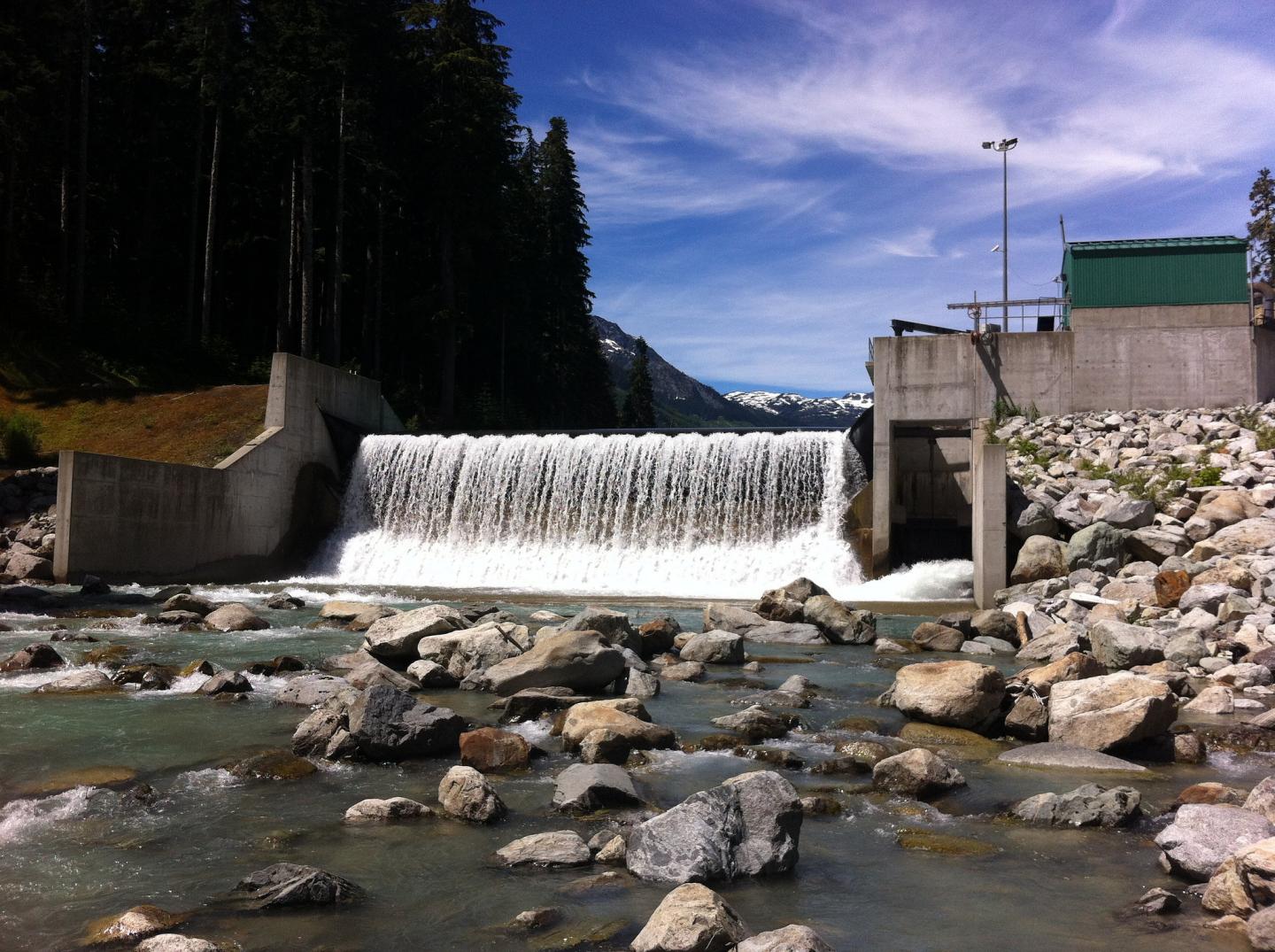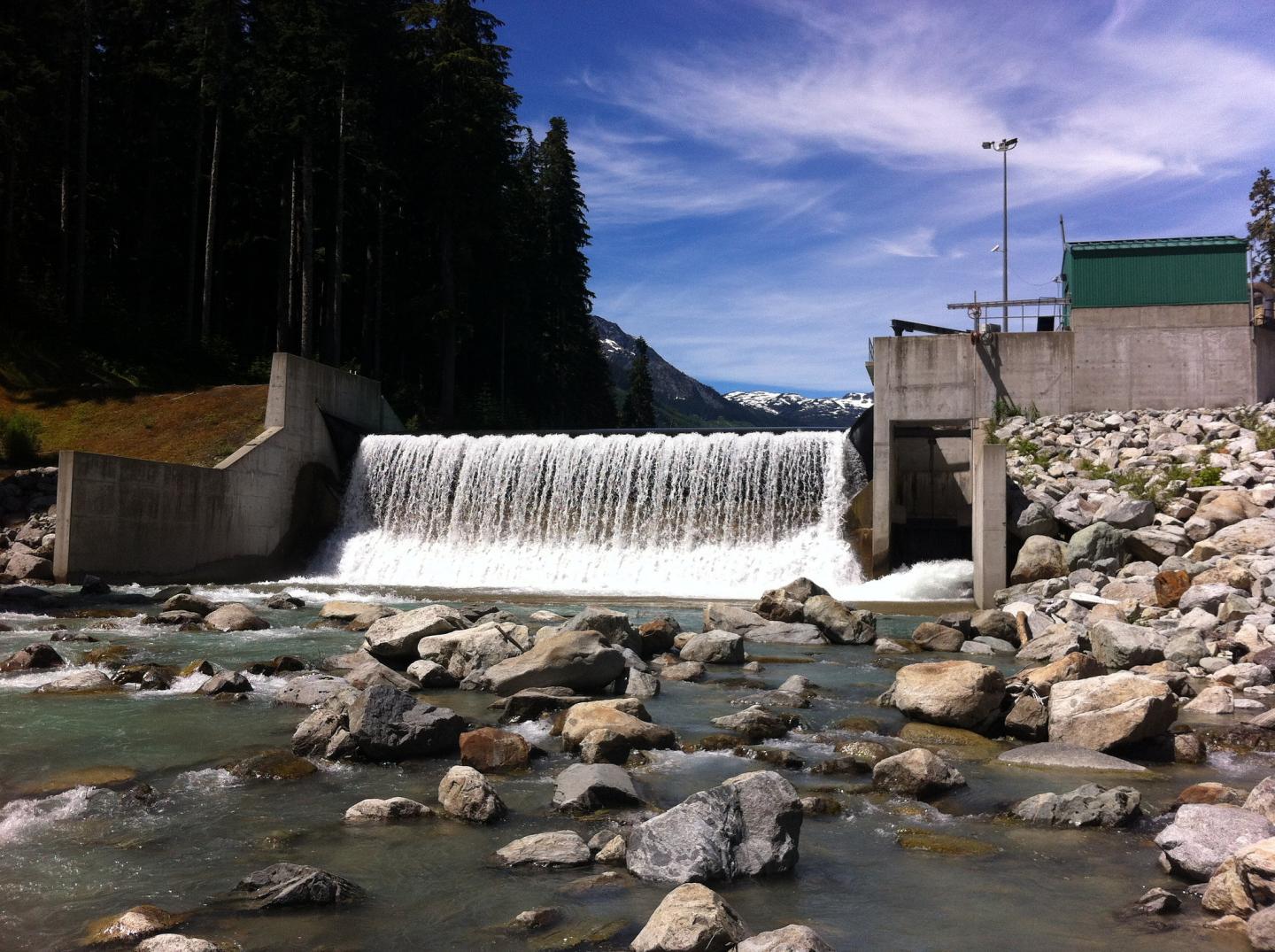
Credit: Rylee Murray
Hydropower dams may conjure images of the massive Grand Coulee Dam in Washington state or the Three Gorges Dam in Hubei, China — the world's largest electricity-generating facility.
But not all dams are the stuff of documentaries. Tens of thousands of smaller hydroelectric dams exist around the world, and all indications suggest that the number could substantially increase in the future. These structures are small enough to avoid the many regulations large dams face, and are built more quickly and in much higher densities. As streams, rivers and watersheds absorb more small dams, however, surprisingly few scientific studies have considered their environmental impact, and policies or regulations are lacking or largely inconsistent.
University of Washington researchers have published the first major assessment of small hydropower dams around the world — including their potential for growth — and highlight the incredibly variability in how dams of varying sizes are categorized, regulated and studied. Their paper, the first to provide a global synthesis of the science and policy of small hydropower, appears this month in the journal Frontiers in Ecology and the Environment.
"As we started exploring this topic of small hydropower development, we realized we're facing a proliferation of this kind of facility, but we don't know exactly how their environmental impacts scale up in a watershed," said lead author Thiago Couto, a UW doctoral student in the School of Aquatic and Fishery Sciences.
"We have identified some important gaps in policy and science that should be filled to better manage small hydropower dams and to have science that really informs policy."
Dams, big or small, have the potential to change a river's water flow, temperature, sediment, and ultimately the patterns in plant and animal diversity. These factors have been long-studied for large dams, yet have been largely ignored for small dams — especially considering the potential cumulative effects of many small dams in a single river system.
Their research reports that nearly 83,000 small hydropower plants are operating or are under construction in 150 countries. For every large hydroelectric dam, 10 small dams exist. If all hydropower capacity were to be developed, the study estimates that this number could more than triple.
Small hydropower can take many different forms. Some small dams are built to store water in reservoirs and then release water downstream, while others divert water away from rivers into powerhouses; in all cases water is used to turn turbines and create electricity.
One of the challenges the researchers faced in compiling these numbers is that countries define "small" hydropower plants differently. As such, there is no international standard with which to categorize and compare dams. Moreover, while the modifier "small" is assumed to equate with few environmental impacts, this is a largely untested notion.
Additionally, countries that do classify small hydropower dams do so based on only their energy capacity and consequently ignore other factors during the licensing decision that might contribute to environmental impacts. In Brazil, for example, there are cases of small hydropower dams producing the same amount of power, but varying greatly in the sizes of reservoirs behind them. This kind of discrepancy happens because most classifications ignore measurements of a dam's physical footprint, height or whether it has a reservoir behind it.
"It was surprisingly difficult to find scientific articles that have rigorously quantified the individual and cumulative impacts of small hydropower. This is a critical research frontier for the future," said Julian Olden, senior author and UW professor of aquatic and fishery sciences.
"Individually, large hydropower dams will always cause greater environmental impacts, but with rapid growth of the small hydropower sector, our rivers might just suffer from many small cuts."
It was not too long ago that the world turned to developing small hydropower plants. The trend toward small dams began in Europe in the mid-1980s and has grown rapidly in recent decades. Small dams are ideal for rural areas because they don't have to be connected to the electric grid to power homes and businesses. As a result, many private landowners and corporations can leverage easier environmental permitting to build small hydropower dams for a fraction of the time and cost of large dams.
The researchers say more research is needed to understand the cumulative effects of many small dams on the landscape, especially given the rapid pace of development. But in the meantime, they advocate for a standard definition of "small" dams that include more than just generation capacity so that regulations and policies can be applied more rigorously.
"I think one of the most important results of this paper is to show that the development of the small hydropower sector is actually happening in many regions of the world," Couto said. "There is a proliferation of small dams and not much known about how multiple dams affect watersheds as a whole, so that's where science has a key role to play."
The researchers will contribute to that work this spring when they start to study the ecological effects of multiple small hydropower dams in southern Brazil.
###
This research was funded by the H. Mason Keeler Endowed Professorship and CNPq (Science without Borders).
For more information, contact Couto at [email protected] or 206-724-3920 and Olden at [email protected] or 206-540-7421.
Images available for download: https://flic.kr/s/aHskuPCmEw
Michelle Ma
University of Washington
[email protected]
Media Contact
Michelle Ma
[email protected]
206-543-2580
@UW
http://www.washington.edu/news/
Original Source
http://www.washington.edu/news/2018/01/22/small-hydroelectric-dams-increase-globally-with-little-research-regulations/ http://dx.doi.org/10.1002/fee.1746





